A triptych is defined as a work of art in three sections. The history of triptychs dates back to the Middle Ages. Originally designed and constructed for cathedrals, triptychs were constructed of three panels of wood and painted with oil paints. The outer panels(painted on both sides) could be folded over the center panel or displayed open. Today triptychs can also be found in homes and offices. Many themes are used and the triptych panels are displayed side-by-side, sometimes with a separation between the panels.
The Austrian artist, Gustav Klimt (1862-1918) is famous for his painting, The Kiss, but he painted numerous versions of very decorative trees, The Tree of Life, embellished with gold paint. Klimt’s father was a gold engraver. There are many interpretations of these paintings.
Goal (Terminal Objective):
Students will create personal art statements inspired by Gustav Klimt’s art. They will incorporate an interpretation of a tree of life and add and other symbols and embellishments to reflect their own cultures.
Objective:
Students will learn about the history of triptych art. They will view examples of traditional and contemporary triptychs and learn how they were used in the Middle Ages and how they have become a vibrant art style today. Students will be inspired to create personalized triptychs with symbols that reflect their cultures. They will be inspired by Gustav Klimt’s tree of life paintings. References to science units in botany will be included.
National Standards:
Visual Arts Grades 5-8 Content Standard 1: Understanding and applying media, techniques, and processes
Visual Arts Grades 5-8 Content Standard 3: Choosing and evaluating a range of subject matter, symbols, and ideas
Visual Arts Grades 5-8 Content Standard 4: Understanding visual art in relation to history and culture
Visual Arts Grades 5-8 Content Standard 5: Reflecting upon and assessing the characteristics and merits of their work and the work of others
Visual Arts Grades 5-8 Content Standard 6: Making connections between visual arts and other disciplines (science/botany cross curriculum connection)
Purpose:
Students will learn about triptych art and produce a personal triptych painting. They will share their completed art works with classmates and be able to discuss and critique their art using intelligent art vocabulary.
VocabularyDEFINITIONS WILL BE ADDED
Triptych – an art work that is produced in three sections
Gustav Klimt – Austrian artist known for elaborate patterns and gold embellishment in his paintings
Middle Ages — years between 1066 and 1500 CE
Embellish – to make art more beautiful by adding exquisite details and decoration Thumbnail sketch – a small preliminary drawing by an artist
Analogous colors – closely related colors on the color wheel Complementary colors – colors of opposite hues
Symmetrical balance — a design that places images and elements evenly distributed on both sides of the composition
Asymmetrical balance — a design where elements and images are placed
unevenly from the center of the composition
Materials:

#22-6010 Washable Watercolor Magic,LiquidWatercolor

#17-5099 Sargent Art MetallicTempera
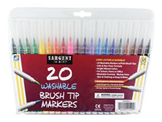
#22-1520 Washable BrushTipMarker
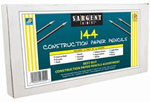
#22-7292 Construction Paper ColoredPencils
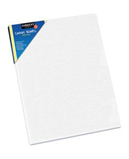
#90-20xx StretchedCanvas

#56-3001FlatBrushes

#56-4000ChubbyBrush

#98-8916 Paint StorageTray
Time:
Time4 lessons (45 minutes each)
Introduction and Motivation (Set):
VTeacher introduces students to traditional and contemporary triptych art and students discuss how triptychs from the Middle Ages have evolved into a viable art form for the 21stcentury. What art materials did early artists use to construct triptychs? What themes were painted on them? Where were they displayed? What symbols and patterns did Gustav Klimt use to communicate his ideas in his art? How did he incorporate gold paint What symbols of communication do we recognize today through advertising and technology? What are symbols that communicate your culture to the world? How are triptychs used today? Teacher reviews elements of design with students and gives them sketch paper and prepared drawing templates. Teacher demonstrates the skill of creating an image on three panels with a space between each panel. Students are given time to begin sketching and drawing images that they will select for their final triptychs. They are encouraged to combine imagery and symbols from their own cultures in their thumbnail sketches.
Instruction
Lesson 1: Following the introduction, teacher reviews the elements of design with students. Teacher reviews vocabulary and demonstrates the skill of drawing a composition on three panels. The space between the panels must visually continue the composition. Students are given sketch paper and triptych templates. Students work on thumbnail sketches for their final triptych compositions.

Thumbnail sketch for triptych composition
Lesson 2: Students and teacher create a rubric for assessment of the lesson. Thumbnail sketches are completed and students are given three canvas boards for final triptychs.
Color palettes are discussed and students select colors for their backgrounds. Each board is painted. Students are instructed to paint the sides of the boards. This will give a “finished look” to the art works. Dark backgrounds are suggested because chalk drawing will be easy on them.

Boards are painted and allowed to dry.
Lesson 3: Teacher reviews Lesson 1. Using chalk, students transfer their thumbnail sketches onto painted canvas boards with awareness of creating a balanced composition that continues visually with spaces between the boards. Teacher reviews analogous and complementary colors before students select color palettes. Gold and silver paint will be available, as well as liquid metal markers. Students are encouraged to experiment with color schemes before they begin painting. Teacher demonstrates proper preparation of paints, application of paint and clean-up procedures.

Chalk is used to transfer thumbnail sketch to the canvas boards.
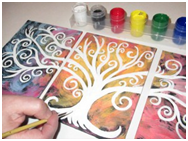
Background colors are applied with a large brush. The foreground image is painted after background paint is dry.
Lesson 4: Students complete paintings. Liquid metal paints and liquid metal markers are available for additional embellishment. The completed triptychs are mounted on heavy tag board and displayed. After completion students take time to write about their learning experience. They complete the rubric from Lesson 2 as a self-assessment exercise. A group critique follows and allows students time to ask classmates abouttheir paintings.
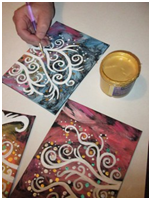
Liquid metal paints are used to embellish the triptych.
Activities:
(1) GuidedPractice:
- Students learn about triptych art. They learn about triptychs from the Middle Ages and triptychs that are painted today. Students watch teacher’s step-by- step demonstrations and see examples of art by Gustav Klimt and other artists.
- Students are asked to consider specific symbols used by Miro in his fantasy art and replicate those motifs within their fantasy drawing.
- Students discuss images and symbols representing their world today and specifically those representing their own cultures for the world. They transfer these ideas into art works inspired by Gustav Klimt’s tree of life.
(2) Independent Practice and Check for Understanding:
- Teacher circulates through the room during student work time,answering
questions and offering support as needed. Teacher differentiates as needed to help students achieve success. Additional visuals are available for student reference. Teacher notes students’ understanding of directions and reviews with the class.
(3) Closure:
- Students complete a short written self-reflection of the lesson.
- Students complete a self-assessment rubric.
- Students discuss the importance of respect for individuality.
Evaluation:
Teacher and students complete the rubric created during Lesson 2. Art works are evaluated on the following criteria: composition, originality, message and craftsmanship. (A = 15-16 points, B = 11-14 points, C = 7-10 points, D = 4-6 points, F = 0-3 points).
Composition and visual appearance = 4-0 points (The student arranged images into a balanced composition that fills up the space with interest to the viewer. The composition continues visually over the three panels).
Originality = 4-0 points (The student used positive and negative space and included a variety of lines and shapes in the design. Colors were carefully chosen and work well together).
Message = 4-0 points (The painting includes reference to the tree of life and is embellished to make the triptych personal to the student. The student has learned new art vocabulary and can speak about his/her triptych using these words).
Craftsmanship = 4-0 points (The student worked carefully, neatly and respectfully with selected paints and tools).
Notes and Tips
- To help students with learning challenges, images from thumbnail sketchesmay be enlarged on a copier, cut out and traced onto the canvas boards.
- Students should be reminded to allow painted areas to dry thoroughly before painting sections next to them or over them.
- Students should practice with a variety of brush sizes before painting.
Extension Activities
- Students may personalize their triptychs by creating a collage over thepainting with family photos, magazine images, text, personal drawings or other collage materials.
- Students may make a traditional triptych that folds together. The side panelsmust be painted on bothsides.
Resources:
en.wikipedia.org/wiki/Gustav_Klimt
www.guardian.co.uk/artanddesign/2012 (Klimt Google doodle)
http://goarticles.com/article/The_Meaning_Behind_the_Klimt_Tree_of_Life/5028399
FEBRUARY 2013



